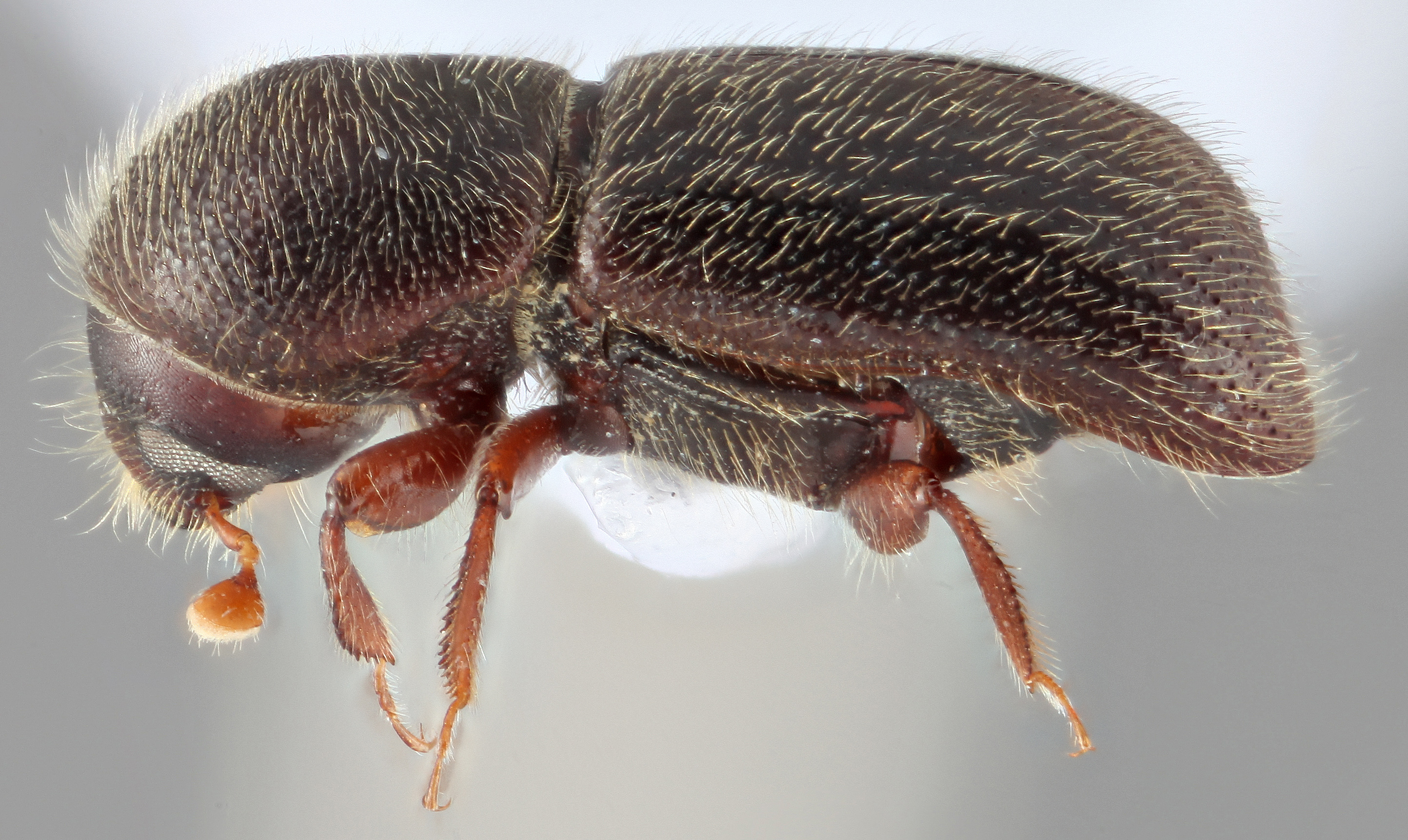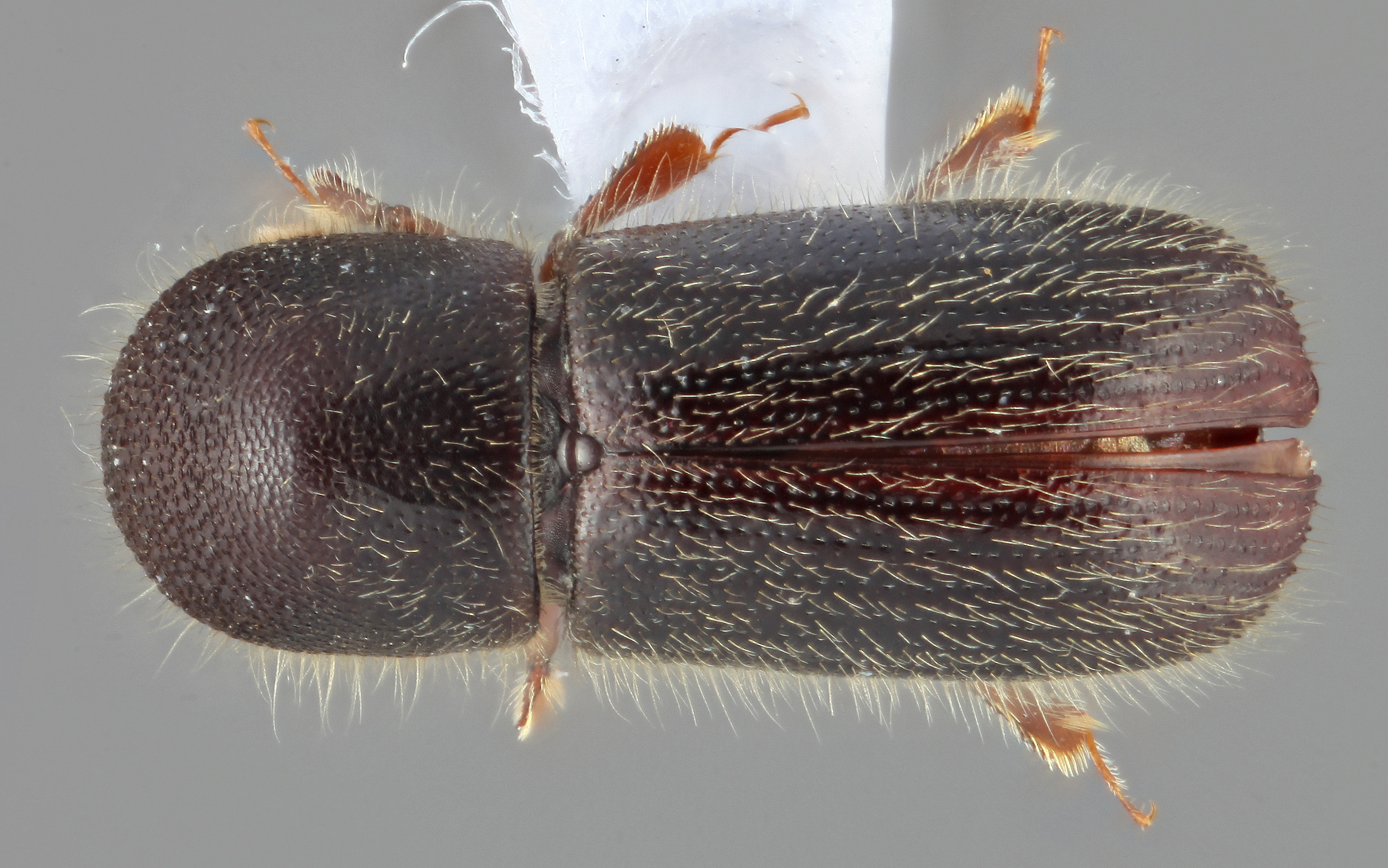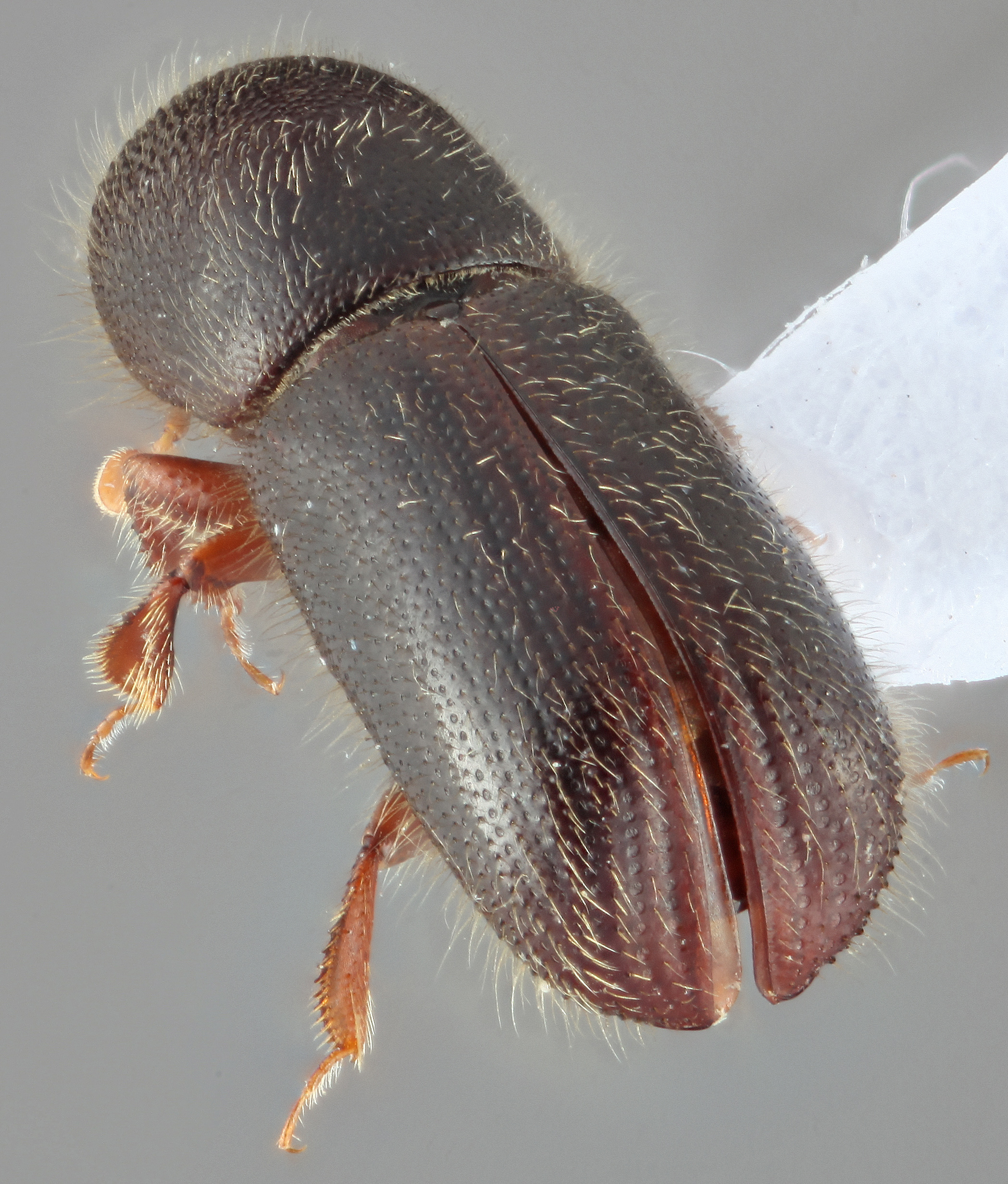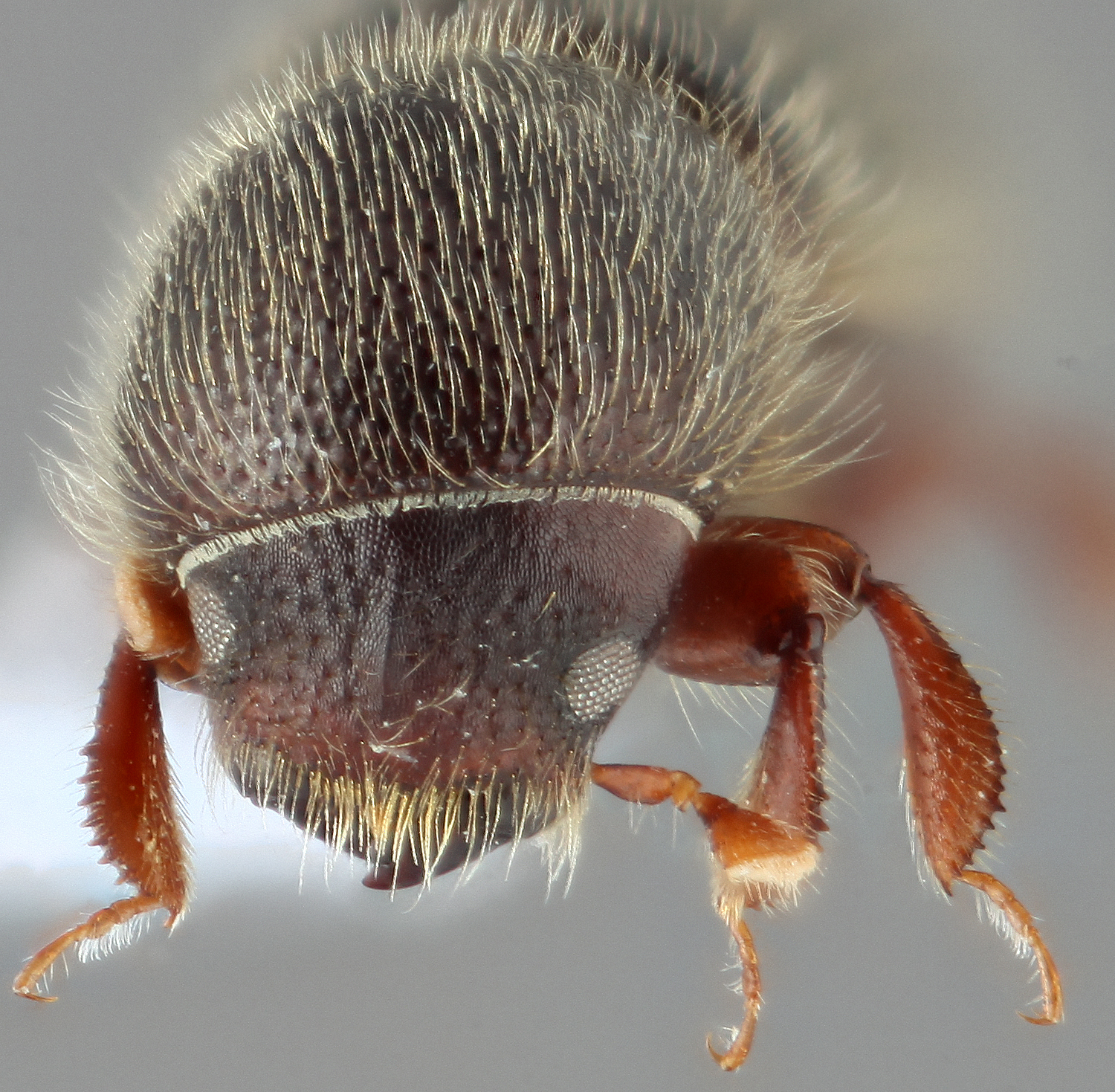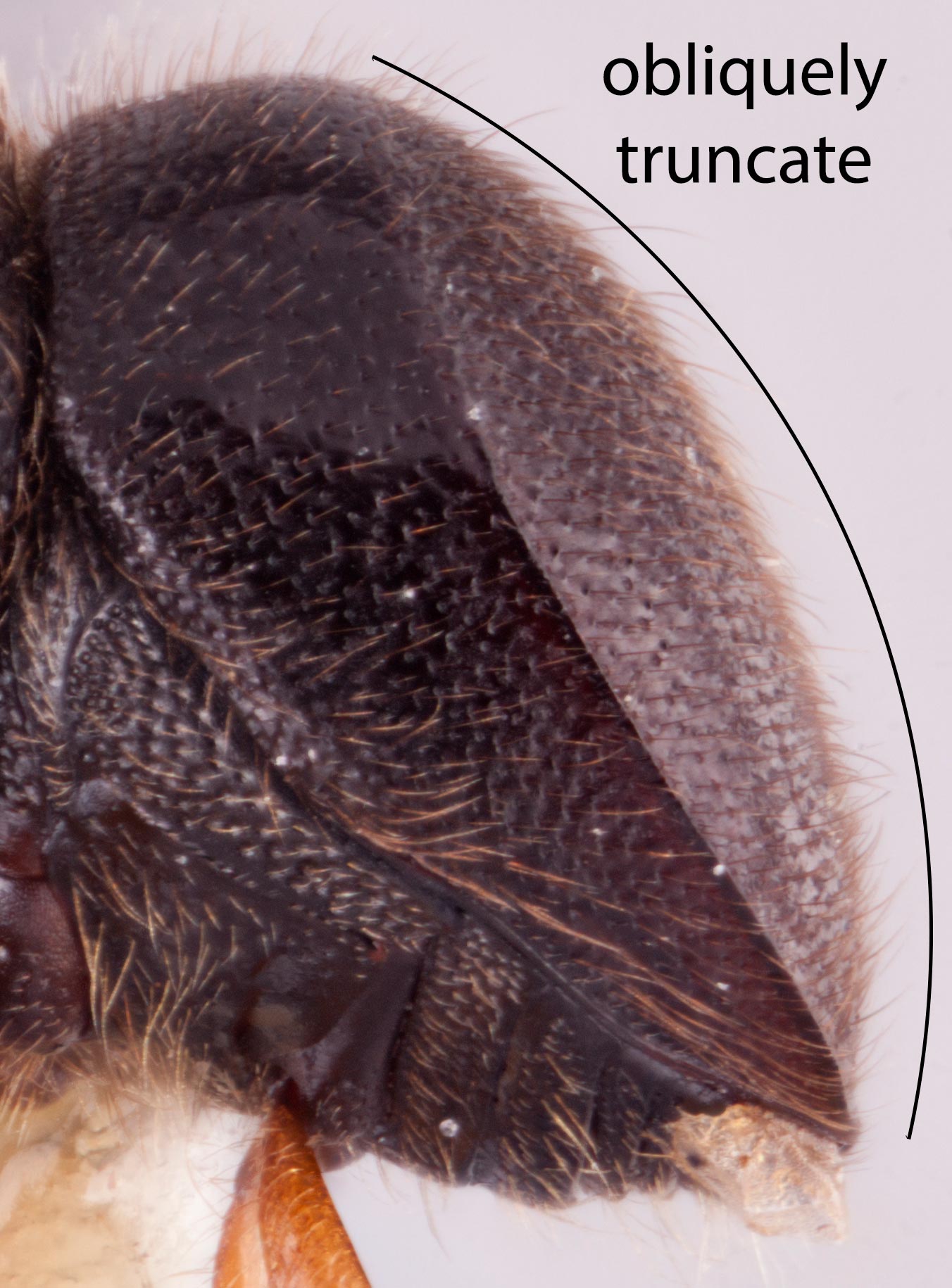Cyclorhipidion triste
|
Cyclorhipidion triste paratype lateral; S.M. Smith |
|
Cyclorhipidion triste paratype dorsal; S.M. Smith |
|
Cyclorhipidion triste paratype declivity; S.M. Smith |
|
Cyclorhipidion triste paratype frontal; S.M. Smith |
Taxonomic history
Cyclorhipidion triste Park & Smith 2020 (in Park et al. 2020Park et al. 2020:
Park S, Smith SM, Cognato AI, Beaver RA. 2020. Catalogue of Korean Xyleborine ambrosia beetles (Coleoptera: Curculionidae) with seven new species. Journal of Asia-Pacific Biodiversity 13: 210-228. https://doi.org/10.1016/j.japb.2020.01.002): 215.
Diagnosis
2.92−3.47 mm long, (mean = 3.28 mm; n = 11); 2.78 times as long as wide. This species is distinguished by the short, steep declivitydeclivity:
downward slope of either the pronotum or elytra
 that is approximately 20% of total elytralelytral:
that is approximately 20% of total elytralelytral:
pertaining to the elytra
length, declivital interstriaeinterstria:
longitudinal spaces along the elytra between the striae, which is not as<br />
impressed and bear smaller punctures.
 1 and 2 that are completely unarmed; posterolateral margins rounded; and declivitaldeclivital:
1 and 2 that are completely unarmed; posterolateral margins rounded; and declivitaldeclivital:
pertaining to the elytral declivity
interstriae 1 with setae in 2 confusedconfused:
of markings, having indefinite outlines or running together as lines or spots without definite pattern; usually referring to punctures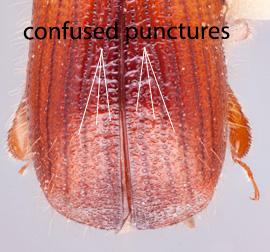 rows and declivitaldeclivital:
rows and declivitaldeclivital:
pertaining to the elytral declivity
interstriae 2 with setaeseta:
small hair-like or scale-like structure
in one uniseriate row.
May be confused with
This species most closely resembles C. distinguendum and C. pelliculosum.
This species is a part of the challenging C. pelliculosum species group. Species in the group are most easily distinguished by the rows of setaeseta:
small hair-like or scale-like structure
along declivitaldeclivital:
pertaining to the elytral declivity
interstriae 1and 2. See table below:
|
species |
declivital declivital: |
declivital declivital: |
total body length (mm) |
total body length/width ratio |
lateral lateral: |
interstriae 2 granules |
interstriae 1 & 3 granules |
|
C. achlys Smith, Beaver, and Cognato, 2022 |
3 |
1 |
3.4 |
3.09 |
steeply rounded |
absent |
present |
|
C. beaveri Lin and Smith, 2022 |
1 |
1 |
1.68−1.85 |
2.91−3.05 |
steeply rounded |
present |
present |
|
2 |
1 |
1.6−2.4 |
2.5−3.29 |
steeply rounded |
absent |
present |
|
|
2 |
2 |
2.2 |
3.14 |
steeply rounded |
absent |
present |
|
|
C. cognatoi Lin and Smith, 2022 |
2 |
1 |
2.95−3.28 |
2.82−2.93 |
steeply rounded |
absent |
present |
|
3 |
2 |
2.5−3.11 |
2.6−3.0 |
steeply rounded |
absent |
present |
|
|
2 |
1 |
2.75−3.0 |
2.75−3.0 |
steeply rounded |
absent |
present |
|
|
1 |
1 |
2−2.2 |
2.75−3.07 |
steeply rounded |
absent |
present |
|
|
3 |
1 |
3.2−3.5 |
2.67−3.0 |
steeply rounded |
rare, on basalbase: |
present |
|
|
C. taedulum Smith, Beaver, and Cognato, 2022 |
2 |
1 |
2.7 |
3 |
steeply rounded |
absent |
present |
|
2 |
2 |
2.7−3.0 |
2.5−3.0 |
steeply rounded |
Often on apicalapex: |
present |
|
|
C. triste |
2 |
1 |
2.92−3.47 |
2.78 |
steeply rounded |
absent |
absent |
|
1 |
1 |
1.65−1.8 |
3.09−3.4 |
obliquely truncateobliquely truncate: |
absent |
present |
Distribution
South Korea
Host plants
unknown (Park et al. 2020Park et al. 2020:
Park S, Smith SM, Cognato AI, Beaver RA. 2020. Catalogue of Korean Xyleborine ambrosia beetles (Coleoptera: Curculionidae) with seven new species. Journal of Asia-Pacific Biodiversity 13: 210-228. https://doi.org/10.1016/j.japb.2020.01.002)
DNA data
specimens not available for sequencing

